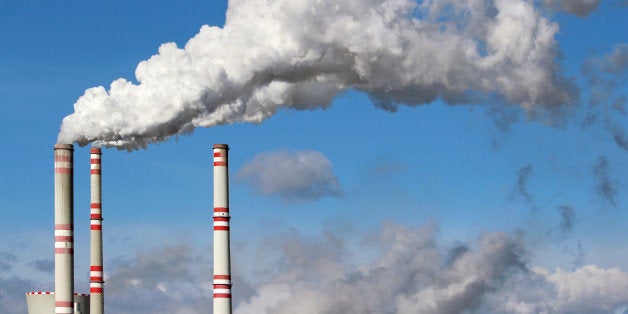
The first pact to commit all countries to cut carbon emissions--the Paris Agreement--was signed by 195 countries in LeBourget, France, on Saturday. Some aspects of the agreement, which will go into effect in 2020, will be legally binding, such as submission of emissions reduction targets and regular review of progress toward them. However, the targets themselves will not be binding.
- To keep global temperatures "well below" 2 degrees Celsius (3.6 Fahrenheit) compared to pre-industrial levels through the year 2100 and to "endeavour to limit" them to 1.5 degrees Celsius
- To balance carbon source and carbon sinks in the second half of this century
- To review each country's emissions reduction contribution every five years so that it can be scaled up
- For rich countries to help poor countries by providing "climate finance" to adapt to climate change.
In a televised statement, President Barack Obama praised world leaders for agreeing on a deal that "offers the best chance to save the one planet we have," while conceding that "no agreement is perfect, including this one."
Critics say the pact is vague and aspirational and does not do enough to avert serious damage. It lacks a timescale for phasing out fossil fuels, and critics describe the language on monitoring and verifying emissions reductions as weak.
Nevertheless, the agreement was hailed by many world leaders.
"When historians look back on this day, they will say that global cooperation to secure a future safe from climate change took a dramatic new turn here in Paris," said United Nations Secretary-General Ban Ki-moon, who added that "markets now have the clear signal to unleash the full force of human ingenuity."
The agreement won't enter into force until 55 countries representing 55 percent of the world's emissions have ratified it.
Deal Details: Finance and Temperature
Some of the biggest crunch issues in the lead up to the climate agreement in Paris were money and temperature goals. So what does the deal say about these issues?
Finance: According to an agreement made at the talks in Copenhagen in 2009, developed countries will aid developing countries with $100 billion a year in climate finance by 2020 to aid in the transition to sustainable forms of energy. It's an agreement they opted to continue through 2025. Prior to 2025, a new goal will be adopted--exactly when or who is responsible for meeting it is unclear. The fund, so far, isn't quite up to that $100 billion goal. There is no legally binding language about it.
Temperature: To keep temperatures below 2 degrees Celsius, the agreement calls for parties to "reach global peaking of greenhouse gas emissions as soon as possible, recognizing that peaking will take longer for developing country parties, and to undertake rapid reductions thereafter in accordance with best available science, so as to achieve a balance between anthropogenic emissions by sources and removals by sinks of greenhouse gases in the second half of this century." According to The New York Times, the passage implies that at least some fossil fuels can continue to burn, as long as the greenhouse gas emissions are absorbed by a larger number of "greenhouse sinks," like new forests.
One environmental organization has already suggested that if commitments pledged before and during the talks in Paris are met, a critical mass of countries could reach emissions peaks by 2030.
Arctic Temperatures Reach Record High
The National Oceanic and Atmospheric Administration (NOAA) released its Arctic Report Card, which finds that the average annual air temperature over land in the region was 2.3 degrees Fahrenheit above the long-term average (between October 2014 and September 2015). That's the highest since modern records began in 1900, reports Fortune.
"Warming is happening more than twice as fast in the Arctic than anywhere else in the world," said NOAA Chief Scientist Richard Spinrad. "We know this is due to climate change.
This warmer air, the report suggests, is affecting sea temperatures and melting ice--expanding oceans and causing sea-level rise. Just how bad is it? In the 80s, about 20 percent of the sea ice in the region was old and about 45 percent had formed that year. By contrast, in 2015, about 70 percent had formed in the previous year; only about three percent was considered "old" ice.
"The conclusion that comes to my mind is these report cards are trailing indicators of what's happening in the Arctic," Spinrad said. "They can turn out to be leading indicators for the rest of the globe."
Jim Overland, a NOAA oceanographer and one of the more than 70 co-authors of the report, suggested that even the newly inked Paris deal may not be enough--at least in the short term--to turn things around.
"Unfortunately, we passed some critical points on that," Overland said. "If the globe goes to a 2-degree warming, we're looking at a 4- or 5-degree warming for the winter in the Arctic by 2040, 2050. That's based upon the CO that we've already put into the atmosphere and will be putting for the next 20 years."
The Climate Post offers a rundown of the week in climate and energy news. It is produced each Thursday by Duke University's Nicholas Institute for Environmental Policy Solutions.
